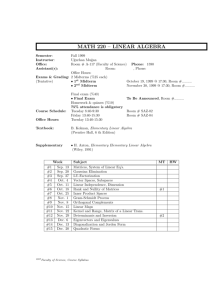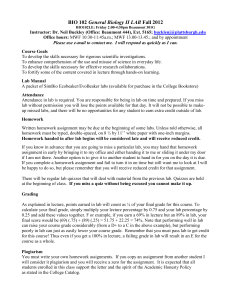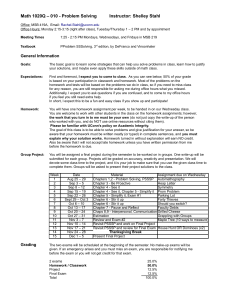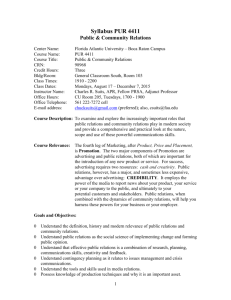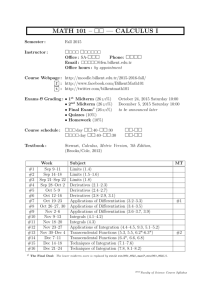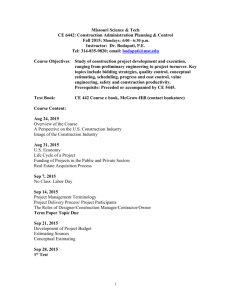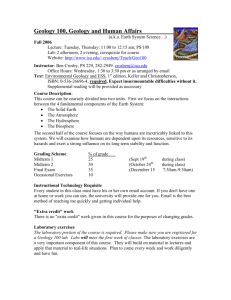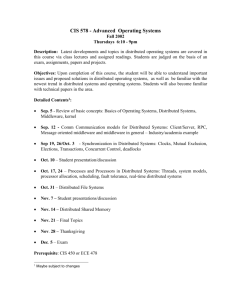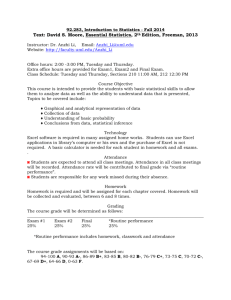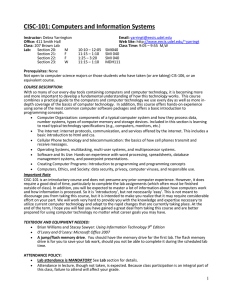Global Marketing Strategy Syllabus 1_2015
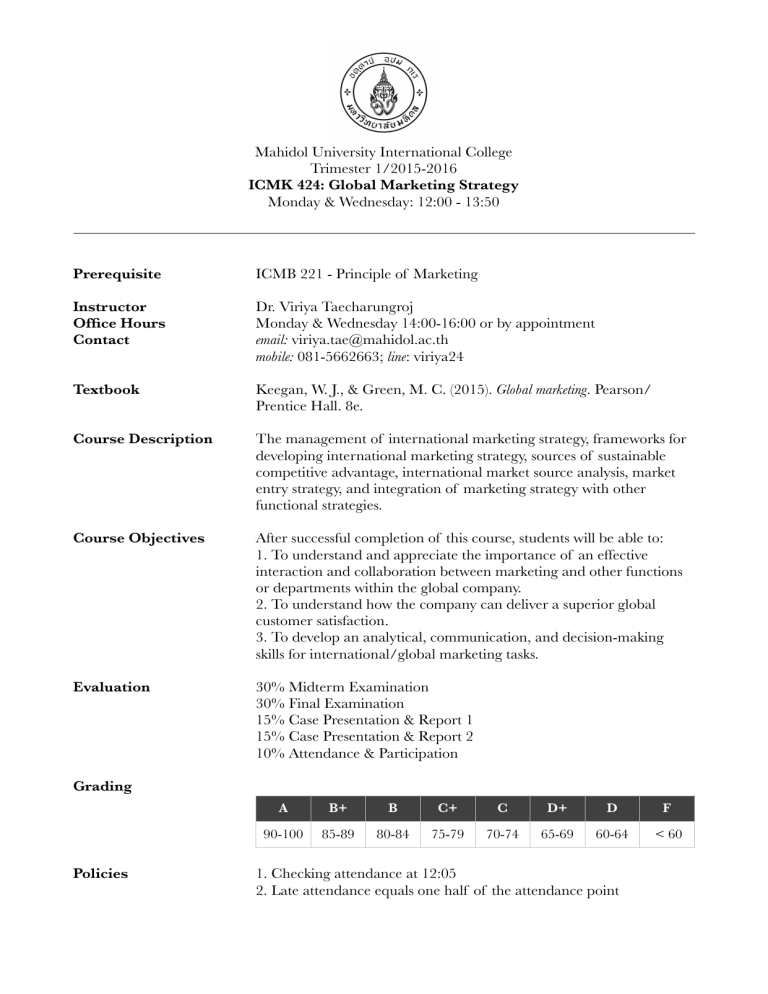
Mahidol University International College
Trimester 1/2015-2016
ICMK 424: Global Marketing Strategy
Monday & Wednesday: 12:00 - 13:50
Prerequisite
Instructor
Office Hours
Contact
Textbook
ICMB 221 - Principle of Marketing
Dr. Viriya Taecharungroj
Monday & Wednesday 14:00-16:00 or by appointment email: viriya.tae@mahidol.ac.th mobile: 081-5662663; line : viriya24
Course Description
Keegan, W. J., & Green, M. C. (2015). Global marketing . Pearson/
Prentice Hall. 8e.
The management of international marketing strategy, frameworks for developing international marketing strategy, sources of sustainable competitive advantage, international market source analysis, market entry strategy, and integration of marketing strategy with other functional strategies.
Course Objectives After successful completion of this course, students will be able to:
1. To understand and appreciate the importance of an effective interaction and collaboration between marketing and other functions or departments within the global company.
2. To understand how the company can deliver a superior global customer satisfaction.
3. To develop an analytical, communication, and decision-making skills for international/global marketing tasks.
Evaluation
Grading
30% Midterm Examination
30% Final Examination
15% Case Presentation & Report 1
15% Case Presentation & Report 2
10% Attendance & Participation
A B+ B C+ C D+ D F
90-100 85-89 80-84 75-79 70-74 65-69 60-64 < 60
Policies 1. Checking attendance at 12:05
2. Late attendance equals one half of the attendance point
Course Outline
Week Date Topics
1 M 14 Sep Introduction to Global Marketing Strategy
W 16 Sep Chapter 1 Introduction to Global Marketing
2 M 21 Sep Chapter 2-3 Global Economic and Trade Environments
W 23 Sep Chapter 4 Social and Cultural Environments
3 M 28 Sep Chapter 5 Political, Legal, and Regulatory Environments
W 30 Sep Case 1 Introduction and Discussion
4 M 5 Oct Chapter 6 Global Information Systems and Market Research
W 7 Oct Chapter 7 Segmentation, Targeting, and Positioning
5 M 12 Oct Chapter 8-9 Global Market-Entry Strategies
W 14 Oct Case 1 Presentations
6 M 19 Oct Case 1 Presentations
W 21 Oct Review
7 M 26 Oct Midterm
W 28 Oct Chapter 10 Brand and Product Decisions in Global Marketing
8 M 2 Nov Chapter 11 Pricing Decisions
W 4 Nov Chapter 12 Global Marketing Channels
9 M 9 Nov Chapter 13 Global Marketing Communications I
W 11 Nov Case 2 Introduction and Discussion
10 M 16 Nov Chapter 14 Global Marketing Communications II
W 18 Nov Chapter 15 Global Marketing and the Digital Revolution
11 M 23 Nov Chapter 17 Corporate Social Responsibilities
W 25 Nov Case 2 Presentations
12 M 30 Nov Case 2 Presentations
W 2 Dec Review
Final Examination
Report Format
All report writing in this class should follow Mahidol’s thesis/thematic format. The following points are brief description: a. Times New Roman, 12-point font should be typed in A4 paper size, with 1.5 line spacing. b. Each paragraph should not be longer than 12 lines. Every paragraph must be 2 centimetres indented from the left, without additional space prior. c. The margins for each page are: 1.5”on the left and top, and 1” on the right and at the bottom. d. The page number of each page must appear on the top, right-hand corner, with 1” distance from the top and the right sides. e. All references, both in-text and at the back, must follow APA style properly. f. Tables and figures must have captions appearing on top, with their sources at the bottom of each. If you create the table or graph/figure yourself by adapting from any source, you should write it like this:
“Adapted by the authors from …..” g. Each report must have a cover page, identifying the case topic and participant names and ID numbers. The report can be bound in whatever way.
Presentation (10)
Delivery
(3 points)
Content
(3 points)
Length
(2 points)
Response
(2 points)
Report (10)
Idea
(3 points)
Organisation
(3 points)
Research
(2 points)
Style
(2 points)
Average (60%-70%)
Have difficulties communicating to the audiences or reading the notes.
Partially answer the questions from the case with some errors.
The presentation drastically deviates the allotted time limit.
Respond to the questions insufficiently.
Good (70%-85%)
Communicate clearly and have appropriate eye contacts. Presenters show some enthusiasm.
Adequately address the main issues of the case.
Excellent (85%-100%)
Excellently communicate with enthusiasm and engage with audiences.
The presentation slightly exceeds the allotted time limit or too short.
Adequately respond to the questions but the answers are unclear or flawed.
Good (70%-85%)
Explores insightfully into the case. The content is captivating and beneficial to the audiences.
The length of the presentation is appropriate.
Respond to the questions well and show full understanding.
Excellent (85%-100%) Average (60%-70%)
Has weak analysis and a vague idea. Fails to answer the main questions thoughtfully.
May make some arguments and arrange them randomly. Lacks coherence.
Depends on unsupported opinions, experience, or generalisation.
Often uses vague and inaccurate words.
Sentences mostly have grammatical errors.
Solidly discusses the case but have few lapses in development. Shows satisfactory understanding of the case.
Shows a logical progression of arguments.
Some links may be faulty.
Uses some evidence to support the ideas.
Excels in analysing the case. Demonstrates sophistication of thought and the application of knowledge. Central idea is communicated.
Uses an appropriate logical structure. Guides the reader through the chain of reasoning and development of arguments and discussions.
Uses appropriate and sufficient evidence to support the ideas.
The sentences are somewhat clear, structured with some errors.
The sentences are clear, structured with minimal errors. Excellent use of language.
